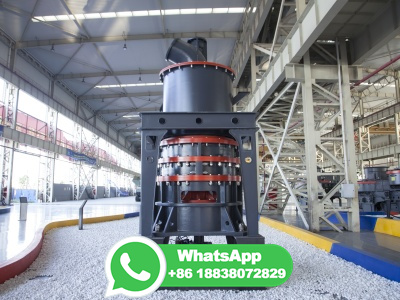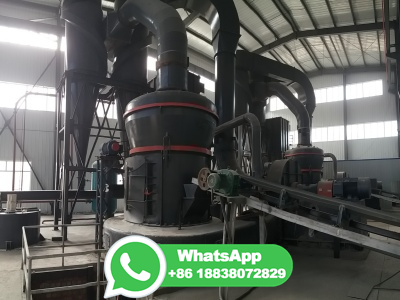
Table 2: Specific hydrogen consumption and requirements for direct reduction Besides the hydrogen needed for the reduction of iron ore, energy is also required to heat the reducing gas. In the conventional direct reduction process this energy derives from a partial stream of the top gas of the Midrex shaft. Usage of
WhatsApp: +86 18838072829
An innovative coalbased direct reduction process of lowgrade iron ore coal composite minipellets in lowtemperature rotary kiln has been developed by Central South University. In this approach, 38 mm pellets were made of mixture of sodium additives, iron ore and coal.
WhatsApp: +86 18838072829
Direct reduction. New Zealand Steel steel complex, fed by direct reduction rotary furnaces (SL/RN process) [1] (capacity 650,000 t/year). [2] In the iron and steel industry, direct reduction is a set of processes for obtaining iron from iron ore, by reducing iron oxides without melting the metal. The resulting product is prereduced iron ore.
WhatsApp: +86 18838072829
Background In a DR process, iron ore pellets and/or lump iron ores are reduced by a reducing gas to produce DRI or hot briquetted iron (HBI). Depending on the generation of the reducing gas, two different DR processes are commercially available: gasbased and coal/oilbased.
WhatsApp: +86 18838072829
DR processes reduce iron ore in its solid state by the use of either natural gas or coal as reducing agents, and they have a comparative advantage of low capital costs, low emissions and production flexibility over the BF process. © 2019 The Authors.
WhatsApp: +86 18838072829
A thick slag layer is situated above the metal bath. Iron ore fines, coal and fluxes are injected directly into the melt in the smelt reduction vessel. The process uses iron ore fines directly with noncoking coal (5070% fixed carbon, 1038% volatile matter and 512% ash; less than 10% ash is preferred).
WhatsApp: +86 18838072829
The rotary kiln DRI process offers 11% and % lower GHG emissions on the lowest and highest end of the sensitivity band, when compared to the coal gasifier DRI process. However, if ore pelletization is uniformly considered for all DRI process, the emissions of the coal gasifier process could be up to % lower than the rotary kiln process ...
WhatsApp: +86 18838072829
Direct reduced iron ( DRI ), also called sponge iron, [1] is produced from the direct reduction of iron ore (in the form of lumps, pellets, or fines) into iron by a reducing gas or elemental carbon produced from natural gas or coal. Many ores are suitable for direct reduction.
WhatsApp: +86 18838072829
Baikadi, V. Runkana, S. Subramanian, "Operability Analysis O f Direct Reduction Of Iron Ore B y Coal In An Industrial Rotary Kiln", Science Direct, IFAC Papers online, Vol. 49(1), 2016, pp ...
WhatsApp: +86 18838072829![KruppCODIR process. [2] | Download Scientific Diagram ResearchGate](/806kvze/20.jpg)
An established alternative to coal and cokebased reduction of iron ores in blast furnaces is the ore reduction by coal or reformed natural gas (CO, H2) to direct reduced iron (DRI) or hot ...
WhatsApp: +86 18838072829
At present, fossil fuels are the steel sector's bloodstream: 27 EJ (10 18 J) of coal, 3 EJ of gas and 5 EJ (1400 TWh) of electricity are consumed annually for the production of the mostly widely ...
WhatsApp: +86 18838072829
The coalbased direct reduction process converts iron oxides into metallic iron under solid state. In the DRI technique, temperatures play the most important role in the reduction process. ... The monotonic reduction of the composite (iron ore/coal) will result in volume shrinkage followed by mass loss, as well as yields in indirect reduction ...
WhatsApp: +86 18838072829
8) The efficiency and throughput of the blast furnace can be improved by the utilization of DRI. 9) The coke and flux consumption of the blast furnace process can also be reduced by the utilization of DRI. 10) The direct reduction plants can be operated with a flexible range of different capacities.
WhatsApp: +86 18838072829
ResearchGate | Find and share research
WhatsApp: +86 18838072829
This process allows the direct utilization of fine iron ores and coal instead of sinter and coke. The fluidized bed reactor system is fed with iron ore fines of a particle size smaller than 8 × 10 −3 m ( Ahn et al ., 2010 ) and additives such as limestone or dolomite.
WhatsApp: +86 18838072829
One of the advantages of char over raw coal is less complicated reduction process due to removal of volatiles during pyrolysis and lack of pollutionforming materials. ... McElwain DLS, Wibberley LJ. Experimental study of coal based direct reduction in iron ore/coal composite pellets in a one layer bed under nonisothermal, asymmetric heating ...
WhatsApp: +86 18838072829
The blast furnace and direct reduction processes have been the major iron production routes for various iron ores ( goethite, hematite, magnetite, maghemite, siderite, etc.) in the past few decades, but the challenges of maintaining the iron and steelmaking processes are enormous.
WhatsApp: +86 18838072829
Kobe Steel has developed coalbased direct reduction (DR) technologies, the FASTMET, FASTMELT and ITmk3 processes, which reduce carbon composite agglomerates (pellets or briquettes) on the hearth of a rotary hearth furnace (RHF). This paper outlines the features of each process, status of technical development and commercialization.
WhatsApp: +86 18838072829
In this paper, we propose and assess a potential design for a fossilfree steelmaking process based on direct reduction of iron ore with hydrogen. We show that hydrogen direct reduction steelmaking needs MWh of electricity per tonne of liquid steel, mainly for the electrolyser hydrogen production. ... but instead of coal and coke the ...
WhatsApp: +86 18838072829
The blast furnace and direct reduction processes have been the major iron production routes for various iron ores ( goethite, hematite, magnetite, maghemite, siderite, etc.) in the past few ...
WhatsApp: +86 18838072829
Coalbased direct reduction of nickel slag and magnetic separation of iron are effective methods of secondary resource utilization. The growth characteristics of metallic iron particles in this process are of great significance for subsequent grinding and magnetic separation process. The nickel slag is mixed with coal powder and other additives in a certain proportion, and then subjected to a ...
WhatsApp: +86 18838072829
THE HEART OF THE MIDREX® PROCESS IS THE MIDREX® SHAFT FURNACE. AS A KEY COMPONENT OF THE MIDREX® DIRECT REDUCTION PROCESS, THE MIDREX SHAFT FURNACE IS THE MOST FLEXIBLE AND VERSATILE REDUCTION VESSEL FOR DRI PRODUCERS. The MIDREX® Shaft Furnace can use natural gas or a syngas from coal or coke oven gas as its reductant.
WhatsApp: +86 18838072829
DR processes reduce iron ore in its solid state by the use of either natural gas or coal as reducing agents, and they have a comparative advantage of low capital costs, low emissions and...
WhatsApp: +86 18838072829
Abstract A mathematical model of direct reduction in an iron orecoal char composite pellet is presented. The model incorporates heat transfer, devolatilisation, pellet size change, and three reduction steps (hematite to magnetite, magnetite to wustite, wustite to iron) as well as carbon consumption during the reduction. The model predictions are in good agreement with experimental data. The ...
WhatsApp: +86 18838072829
Iron making. The primary objective of iron making is to release iron from chemical combination with oxygen, and, since the blast furnace is much the most efficient process, it receives the most attention here. Alternative methods known as direct reduction are used in over a score of countries, but less than 5 percent of iron is made this way. A third group of ironmaking techniques classed as ...
WhatsApp: +86 18838072829
Direct reduction of iron is the chemical removal (reduction) of oxygen from iron ore in its solid form. The iron used in the steelmaking process is currently chemically reduced from iron ore through the use of fossil resources natural gas or coal. This process is known as Direct Reduced Ironmaking (DRI). Carbon combines with the oxygen in ...
WhatsApp: +86 18838072829
DRI production Direct reduction of iron is the removal of oxygen from iron ore or other iron bearing materials in the solid state, without melting, as in the blast furnace. The reducing agents are carbon monoxide and hydrogen, coming from reformed natural gas, syngas or coal. Iron ore is used mostly in pellet and/or lumpy form.
WhatsApp: +86 18838072829
How to reduce the energy consumption of the rotary kilnelectric furnace (RKEF) process has become an important issue for the stainless steel industry. The aim of this study is to reduce the energy consumption of ferronickel production from saprolite nickel laterite in the RKEF process. The effects of the slag binary basicity, FeO content, and Cr2O3 content on the melting temperature and ...
WhatsApp: +86 18838072829
The FINEX is the latest addition and an optimized fineore smelting reduction (SR) iron making process based on the direct use of the coal and iron ore fines. FINEX Process is a fluidized bed based process using ore fines instead using iron ore lumps and pellets.
WhatsApp: +86 18838072829